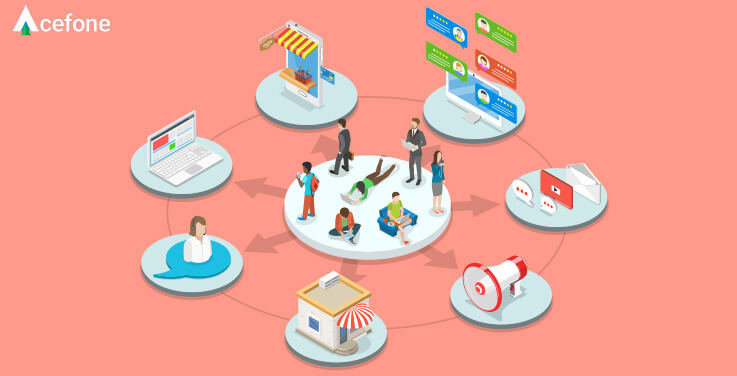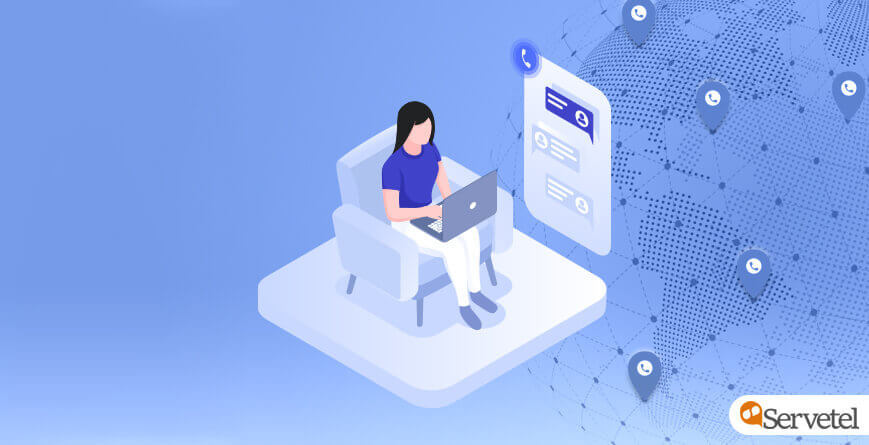The last decade has gone through many advancements in IT and networking. With time, businesses have shifted from traditional communication systems to cloud networks. Today, we have several cloud solutions and services that provide secure communication for various industries. Unfortunately, some network security threats still exist that could potentially harm businesses.
These risks can harm our business and result in tremendous losses. The type of risk that a company might be prone to truly depends on the size of your organization. The bigger your organization, the more departments you will have, leading to more complex operations and layers in network security.
We must familiarize ourselves with the threat and risk types to prevent any damage to our communication and network security. Our research team gathered a list of the most common threats and risks to help detect and mitigate them. We have also shared how to fight such threats and risks using cloud technology.
Top 6 common cloud network security threats
Human Error
In the world of network security, even the best technology can’t always protect us from ourselves. Human error is a top threat because we all make mistakes. It can be something as simple as sharing a sensitive file with the wrong person. It can also be falling for a phishing scam, something that is becoming very common these days.
According to the Harvard Business Review, human error accounts for 80% of incidents that lead to breaches in network security. It’s crucial to educate everyone in your organization about network security best practices and regularly update them on the latest threats.
Data Breach
A data breach is like a treasure chest for cybercriminals. It happens when unauthorized people get their hands on sensitive information, like customer data or company secrets. Think of it as a digital break-in to your servers, giving them access to all the critical information you have.
Protecting against data breaches requires strong encryption, access controls, and constant monitoring to spot any unusual activity. Businesses can prevent these attacks by providing security training to employees, have incident response teams prepared, and use multiple network firewalls.
DDoS Attacks
DDoS attacks stand for Distributed Denial of Service attacks. One example is when your website or cloud network gets overwhelmed by a huge amount of fake traffic. Such attacks overwhelm your system until it can’t handle it anymore, causing disruptions and hinderance in operations and communication.
To defend against DDoS attacks, use traffic filtering, content delivery networks (CDNs), and regularly test your network’s resilience.
Malware Attacks
Malware is like a sneaky spy that infiltrates your systems and infects them. They can quietly enter your system without your knowledge and steal information or cause damage. There are numerous types of them, such as Trojan Horse, Ransomware, Remote Access Trojan (RAT), Adware, etc.
Ransomware is one type of malware that cybercriminal’s use as their hostage-taking tool. Such attacks lock you out of your own data until you pay a ransom to the attacker. Protecting against these threats requires robust antivirus software, regular system updates, and employee training to spot suspicious links and downloads.
SQL Injection Attacks
SQL Injection attacks are all about manipulating databases. Hackers use tricks to get into your database and steal or mess up your data. The most common and frequent SQL attacks are In-band injection attacks.
Attackers mainly use error messages or operator statements in SQL commands to perform these attacks and get access to your database. Ensure that you have the latest software, validate user inputs, and restrict database access to essentials only to prevent such attacks.
Man-in-the-Middle (MitM) Attacks
Imagine you’re having a private conversation, but there’s someone secretly listening in and altering your messages. That someone is a hacker who intercepts your communications by changing IP addresses, using proxy servers, or eavesdropping via public networks. These hackers are popular as middleman, hence the name, man in the middle attack.
To prevent MitM attacks, businesses use encryption, strong identification, and being cautious when connecting to public networks. Security researcher at Infosec Institute, Keatron Evans, suggests that businesses must be cautious even after migrating to a cloud server. He recommends using port-based security with DHCP snooping and DARP inspection. He also recommends upgrading your network to IPv6 as soon as possible.
Implementing cloud technology for better network security
With the introduction of cloud technology, network security became more centralized. Simultaneously, monitoring and management cloud network security became crucial. Fortunately, cloud technology enables us to do so with ease. Such as the integration capability of cloud solutions with existing systems helps reduce the complexity of network security across cloud environments.
Let us look at some of the ways cloud technology enables us to enhance network security and maintain its integrity.
Malware and Ransomware Protection
Cloud-based solutions provide real-time malware scanning and threat detection. They automatically scan files and data uploaded to cloud servers for malicious content. Additionally, cloud providers often offer advanced threat detection and prevention mechanisms. When combined, these tools can identify and mitigate ransomware attacks before they spread across the network.
Access Control and Identity Management
Cloud platforms offer advanced access control and identity management tools. There are several methods for offer like multi-factor authentication (MFA), single sign-on (SSO), and role-based access control (RBAC). They help prevent unauthorized access to cloud resources, reducing the risk of insider threats and unauthorized account access.
Data Breach Prevention and Encryption
Given cloud storage’s centralized nature, data breaches can become quite recurring. Cloud providers offer strong encryption mechanisms to prevent such breaches. Businesses practice encryption for data in two states: data at rest and in transit. Cloud data storage also allows businesses to segment and categorize data, limiting the potential impact of a breach.
DDoS Attack Prevention and Mitigation
Cloud service providers offer robust infrastructure and network protection against DDoS attacks. To mitigate DDOS attacks, cloud service providers follow a four-stage process- Detection, Response, Routing, Adaption. Providers begin by distributing traffic across multiple data centers and utilizing advanced traffic analysis. Further on, cloud platforms absorb and mitigate large-scale DDoS attacks, ensuring clear access to business-critical services.
Two-Factor Authentication (2FA) & Multi-Factor Authentication (MFA)
Cloud technology enables the implementation of 2FA and MFA, requiring users to provide additional identification factors beyond passwords. This added layer of security helps prevent unauthorized access to valuable data. It also reduces the risk of attackers intercepting login credentials during communication between users and the cloud network.
Preventing SQL attacks
Cloud technology prevents SQL injection attacks by implementing robust security measures such as input validation, selective queries, and web application firewalls. Cloud based platforms detect and block malicious attempts through continuous monitoring and real-time analysis of incoming requests. They also offer automatic patching and updates to address known weak points, minimizing the risk of exploiting SQL injection.
Additionally, cloud environments provide network segmentation and isolation, limiting the attackers’ ability to traverse the infrastructure and access sensitive databases. These collective measures fortify the cloud-based applications and databases. Resultantly, they thwart SQL injection attempts and ensure the integrity of business data and systems.
Security Intelligence and Analytics
Many cloud providers offer integrated security intelligence and analytics tools that monitor and analyze network traffic, user behavior, and application performance. These insights help identify anomalies, detect potential threats, and enable proactive response measures.
The Bottom Line
As technology evolves, so do the threats to our network security. Whether it’s human error or malicious attacks, the risks are real. Despite that, cloud technology offers powerful tools to strengthen our defenses.
They provide a robust shield against these threats with features like live malware protection, access control, data encryption, and DDoS mitigation. By using cloud technology and its security features, we can protect our data, communication systems, and networking in the era of cloud technology.
If you’re also looking to switch from a traditional communication system to a cloud server, head over to our solutions page and pick from a variety of cloud-based solutions. Want to fast track this process? Get our free trial today by clicking here.















